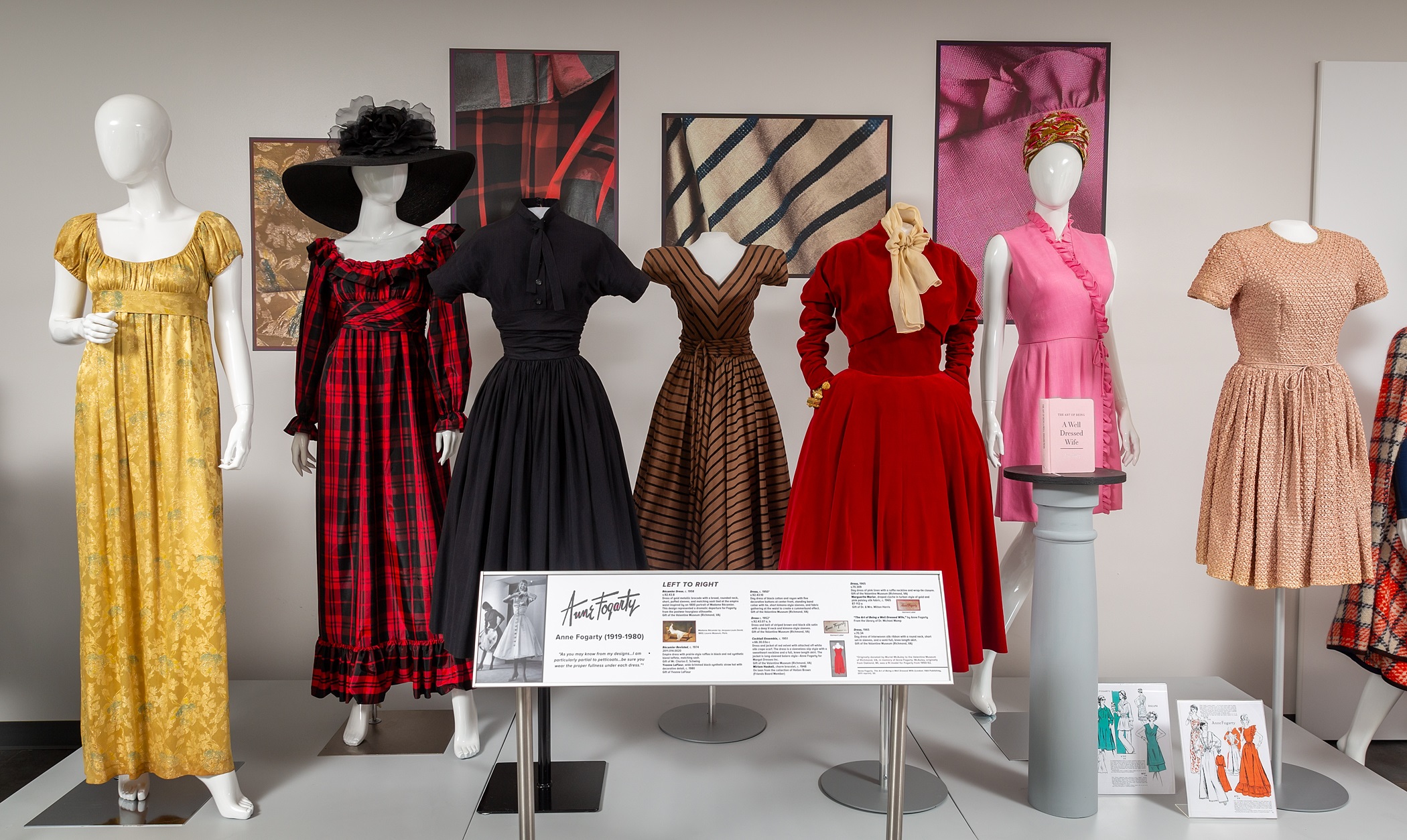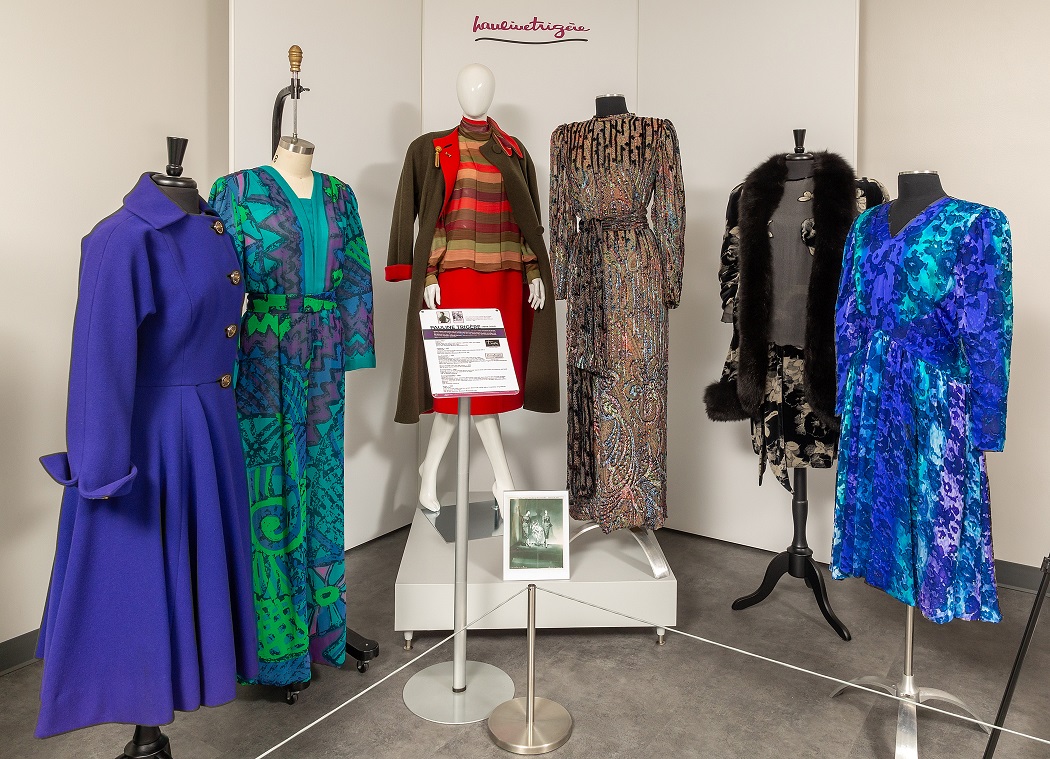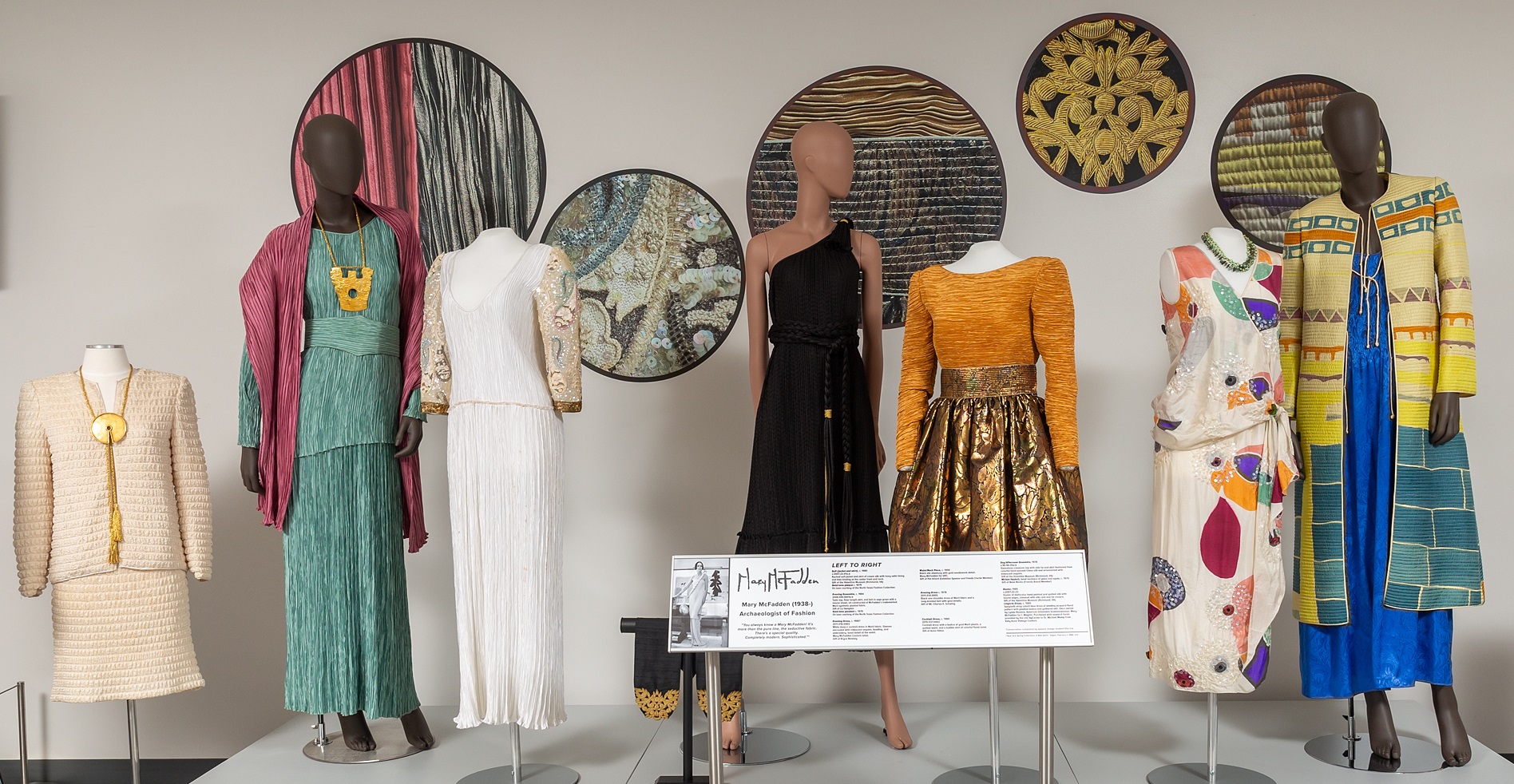Women Fashioning Women
October 1, 2023 - March 28, 2024
Women Fashioning Women joins a burgeoning field of inquiry regarding the history of women fashion designers.1 The seminal exhibition Made It: The Women Who Revolutionized Fashion, staged in 2020 at the Peabody Essex Museum in Salem, Massachusetts, ignited the most current drive to once and for all remove women designers from the shadows of an industry often dominated by men. In 2023/24, other museums such as the Winterthur, the Maryland Center for History and Culture, the Metropolitan Museum of Art, and the Musee des Arts Decoratifs will exhibit fashions of women designers with variable focus and scope. As such, the LSU Textile & Costume Museum is proud to be at the forefront of emergent and essential fashion history research and in the company of such esteemed colleagues. Ironically, in an industry fueled and supported by women, the accomplishments of women fashion designers are lesser known. 2 Presented here is an attempt to further expand the body of knowledge with an examination of the work of American and European women designers such as Gabrielle Chanel, Ceil Chapman, Anne Fogarty, Jeanne Lanvin, Claire Mccardell, Vera Maxwell, Mary McFadden, Jeanne Paquin, Pauline Trigere, and many more. With a wide range of artifacts pulled from the holdings of the LSU Textile & Costume Museum and others borrowed from partner institutions, we respond to the assessment of feminist and theorist Bell Hooks, who said, ''to be in the margin is to be part of the whole but outside the main body."3 Women Fashioning Women repositions the accomplishments of influential but oft-forgotten women fashion designers solidifying their place in the main body of fashion history.
Parisian fashion reigned supreme from the eighteenth century until World War II when the French couture industry slowed to a trickle. In America, consumer demand and lack of French imports inspired many designers to start their businesses, including women such as Claire Mccardell and Pauline Trigere. Several American women designers of the mid-to-late twentieth century created attractive but practical fashions for a modern woman. Mccardell was at the forefront of designing mix-and-match separates that expanded a woman's dressing options. 4 Anne Fogarty interpreted Dior's New Look for American consumers, focusing on practicality and classic style. Both women designers and women retailers shaped the American fashion landscape in the mid-to-late twentieth century. At the women's fashion store Bonwit Teller in New York City, President Hortense Odium hired Fira Benenson as an in-house dressmaker to be prepared for a dearth of couture during wartime. 5 And at Lord & Taylor department store also in New York, President Dorothy Shaver promoted the American Look influencing the successful launch of the careers of many women designers, including Nettie Rosenstein and Lilly Dache.6 American sportswear was on the rise and, by the end of the century, would formally challenge French couture for the crown of fashion dominance thanks to the ingenuity and foresight of many pioneering women in fashion.
Women Fashioning Women posits that women design clothes with themselves in mind. Style, ease of movement, and practicality are considered in terms of how they relate to a woman's body and for a fashionable modern lifestyle. While the male gaze is always looming and certainly influencing fashion, there is a less obvious presentation of women as objects to be admired. Instead, they are strong, independent, active, and understood by the women designing their clothes. The exhibition is flanked by two designer spotlights on either short end of the gallery, with cases at the center of the space housing garments of particular interest and provenance. Various other artifacts around the room's perimeter represent a breadth of women designers' contributions to fashion over an approximately 100-year period.
 Designs by Anne Forgarty
Designs by Anne Forgarty Designs by Pauline Trigere
Designs by Pauline Trigere  Designs by Ceil Chapman
Designs by Ceil Chapman  Designs by Vera Maxwell
Designs by Vera Maxwell Designs by Mary McFadden
Designs by Mary McFadden
2 For this exhibition the term woman or women has been purposefully chosen as an adjective to describe the designers presented here instead of female as it more accurately describes a gender identify vs. a sex assigned at birth.
For an overview, see Mary Norris, "Female Trouble: The Debate Over 'Woman' as an Adjective," The New Yorker, May 30, 2019, https://www.newyorker.com/culture/comma-queen/female-trouble-the-debate-over-woman-as-an-adjective.
3 Bell Hooks, Feminist Theory: From Margin to Center (New York: Routledge, 2015), xvii.
4 Koble Yohannan and Nancy Wolfe, Claire McCardell: Redefining Modernism (New York: Abrams, 1998).
5 Michael Mamp, "Fira Benenson: The People's Countess," in The Hidden History of American Fashion: Rediscovering 20th -Century Women Designers, ed. Nancy Deihl (New York: Bloomsbury, 2018), 89-104.
6 Stephanie M. Amerian, "Fashioning and Selling the American Look: Dorothy Shaver and Modern Art," Economic History Research 12, no. 2 (June 2016): 100-108.
PRESENTED WITH THE GENEROUS SUPPORT OF OUR SPONSORS
- Pat Alford
- Brenda and Lee Berg in honor of her mother, Louise Gartner
- Drs. Steven & Deborah Cavalier
- Mindy & Greg Lacour
- Donna W. Sternberg